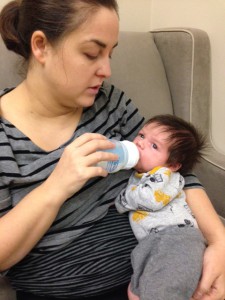 These are things that I see or read every day: From my clients, from professionals and websites focusing on newborn issues. I know that one post cannot squash these myths completely, but if this helps just a few moms obtain correct information, I’ll be very happy! Each one of these statements could be an entire post. As time goes on, I hope to link each myth with a thorough explanation as to why it’s a myth. But for now, read these and remember they are MYTHS!
These are things that I see or read every day: From my clients, from professionals and websites focusing on newborn issues. I know that one post cannot squash these myths completely, but if this helps just a few moms obtain correct information, I’ll be very happy! Each one of these statements could be an entire post. As time goes on, I hope to link each myth with a thorough explanation as to why it’s a myth. But for now, read these and remember they are MYTHS!
Breastfeeding is painful for the first few weeks.
You must pump after every feeding in order to have enough milk.
Engorgement is normal and is a sign that everything is going well.


